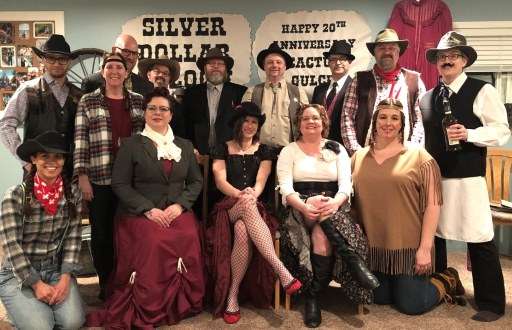
by Steve Hatherley | Jan 26, 2025 | Costume and decor ideas, Party Tips
Here are our Wild West party costume ideas, along with photos from our customers, for costuming for our games set in the 1800s USA: Way out West and Who Shot the Sheriff. (And don’t forget we have a free version of Way out West.) Toy guns and knives: Check with...

by | Aug 29, 2019 | Newsletters, Uncategorised
Welcome to the Freeform Games murder mystery party newsletter! Welcome to another issue of our occasional newsletter. In this issue we talk about: Extra characters for Court in the Act A Speakeasy Murder actual play video Pirate games for Talk Like a Pirate Day...
by | Jul 7, 2017 | Party Tips
Recently we were asked a question about having two people play the same character. (It might have been a mixup, and by the sounds of it the game was oversubscribed.) Our answer was that while it was tricky, it was doable – particularly with the character she had...
by | Jun 29, 2015 | Customer stories
We’ve got something a bit different this time – a story from customer Mark Lemay about adding Skype and simple cryptography to The Spy Who Killed Me. Here’s Mark: When I ran The Spy Who Killed Me I created two additional characters who were only contactable by...
by | Feb 9, 2015 | Options
I recently played in UK Freeform’s annual weekend game. Last year it was Cafe Casablanca (Mo played and I helped run it). The year before we both played in The King’s Musketeers. And this year it was Lullaby of Broadway: Into the Woods. As you might guess by the...




